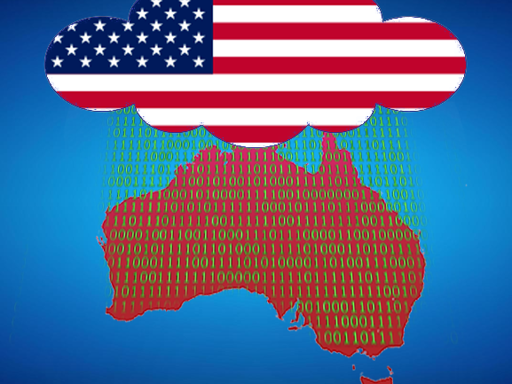Gorgritch_Umie_Killa
- 41 Posts
- 403 Comments

 0·20 hours ago
0·20 hours ago“But our job is to find the people who are hiding themselves in society — and we’re good at that.” - ASIO Chief Mike Burgess
15 Australians have just been killed in the largest mass shooting since Port Arthur… on your fucken watch pal!! Cool your jets, put your head down, and do your job with a little more humility.

 0·7 days ago
0·7 days agoThis is getting very complicated. Maybe they should stop trying to silence each other and start listening to each other. Both, neither, or one of these people might have trash views and ways of expressing those views, but if the board has already signed off on the invitation to the festival, then they need to back that decision. Only something quite heinous coming to light should demand a reconsideration.
Also if all these super smart people on these high flying boards can’t find a way to strip away the power imbalances brought by personal connections at a writer’s festival and provide a fair space for expression, then I’m worried for the meritocracy of the way board positions are given…

 3·9 days ago
3·9 days agoThats really sad you say that considering your home instance is slrpnk.net, which is based off a movement that reaches for a genuinely positive outlook.

 0·10 days ago
0·10 days agoWe need a society that once more values its dreamers and visionaries, those who uncomfortably go against the grain of what and who we are, exploring our nightmares so we might better know ourselves and create new dreams that reveal other ways of being. Not so much underfunded and undervalued as unsupported and despised, our future artists are the key to building the social fibre that will sustain a healthy, resilient and successful Australia
Feels like he’s talking his book, so to speak. I’m not against supporting the arts, but theres a lot out there thats just a waste. Like those government grants that are awarded are so often filled by some schmuck who just wants an easy pay day.
Another reason i think he’s talking his book a bit too much is that he’s made this fairly flimsy claim about arts being the social fibre of a nation as opposed to sports being the sugar high. I don’t know, they both seem pretty sugary to me, the fibre has to be in the strength of connections in the contextual communities of the individuals in that nation.

 0·10 days ago
0·10 days agoCouldn’t agree more with you’re assessment. I’m more hopeful Australia can pull its finger out its arse with military manufacturing.
Yes we’ve shut down an insane amount of primarily manufacturing based industries, (eg cars, thanks Liberals, ya dumb cunts!), the mining and construction industries have a large amount of incidental manufacturing for repairs and unique materials, while our knowledge base from universities and the small military-industrial machine puts us in a okay position to ramp up onshore production of many items, not too mention our wealth and borrowing capacity.
But we will need to relinquish the neoliberal monetary policy only choke-hold on our economy, and allow fiscal spending to direct a greater proportion of our economy than we’ve seen in most of our lifetimes.
I also think while NATO and Europe should always be kept on friendly terms, we need to invest in our neighbours. We may recieve support from far off allies, but those commitments may only go so far. See the British decision to desert the region after Singapore in WW2 for an example of the limitations of far off allies.
So strong allies in our region including Indonesia, New Zealand, Papua New Guinea, Pacific Islands countries et al, that are bound to us through geography, and we to them can bring a deeper/different form of mutual defence commitment. Its time for Oceania as a region to become a more serious idea.

 0·15 days ago
0·15 days agoI’m goona go with, high court challenge would likely be successful if you can demonstrate the law in practice is a defacto ban.

 0·15 days ago
0·15 days agoOof. Rough, but fair.

 1·26 days ago
1·26 days agoInteresting to learn about this company, the different storea, and different ‘front facing storefronts’ ideas soubd on the face of it to be similar to the OP’s idea.
[I only read the wikipedia for my response] (https://en.wikipedia.org/wiki/Rakuten).
But a read through the criticisms section and the example of the negative systemic influence of centralised power are numerous.
The examples where the systemic centralised structure of the company influenced the pathway are,
-
the Corporate Culture section the ‘Englishionisation’,
-
disabling product reviews. This was a product specific case, but it highlights the fact they can take this action sitewide at any time, with little to no recourse.
-
Price Hiking, with up to 18 Rakuten employees having been revealed to have promoted the idea with vendors. If your online marketplace is telling you to do something on price, the pressure for an individual business is great because you are then vulnerable to them making decisions against you with very little you as a vendor can do to respond.
With these few examples from their wikipedia page the negative and at times malign effects of a centralised platform are revealed in the same way the same exercise for Amazon would reveal the same systemic consequences. With the system OP is advocating the onlibe marketplace would be unable through its own structure to implement these pressures on vendors operating on the network. This systemic difference would make it better for vendors, and customers alike, however harder (but not impossible) for a commercial operation that maintains the network to exist. I’d look tobthe Mcdonalds’ Harry Sonneborn owning real estate example of how you can use unique adjacent business structures to build a viable business while not undermining it’s core selling point.
-

 0·29 days ago
0·29 days agoYou’re kidding!

 0·1 month ago
0·1 month agoI see the context you provided in the linked thread. This is a fucked response. Maybe its a good idea to edit your comment with that context here?
From u/rcbrk,
Context: NSW government is about to try criminalising the phrase ‘globalise the intifada’, with other aus governments also considering it.

 0·1 month ago
0·1 month agoNot sure this belongs on c/Australia. If you want to crosspost it to Aussie Zone perhaps its more appropriate to crosspost to c/overseasnews.

 0·1 month ago
0·1 month agoDammit! Don’t be goin showin me that! I’ve already got the kids too much!
Maybe they could get a present from Mrs Claus this year as well… hmm… i’m gona have no money in January at this rate.

 0·1 month ago
0·1 month agoSuch an important question isn’t it. What are we doing here? I feel like the importance and emphasis so much of our society is placing on superficial culture war whipping mules has blinkered them to the real and far more consequential matters the State faces.
Such as, the triple planetary crisis which is ignored at every possible opportunity, or the destabilisation inherent of a switch from a unipolar world to a multipolar world (yes we probably have the threat of China well understood, but seem not to consider the wider implications for other nation’s behaviour in that world, namely the USA’s, (until maybe this year).

 0·1 month ago
0·1 month agoI’ve felt increasingly this way for a long time now about the Military and our reliance on allies with fundamentally different challenges and increasingly different world views from Australia’s.
Australia and New Zealand, and our whole oceania region need to start taking our future planning and preparation seriously as a region with a future, or we will find ourselves on the actual road to serfdom.
I’ll give props to the Albanese government who have made significant progress with pacific islands, png, and Indonesia over this last year, but this is a start to a project that needs bipartisan, and emphatic support otherwise our region will be at the mercy and whim of the large powers in this world for the next century or more.

 0·1 month ago
0·1 month ago“If fanatical evil can cause so much pain, what can fanatical goodness do?”
In the wake of the attacks, Rabbi Lewis said his cousin would have urged people to respond with kindness.
“Eli would be saying, ‘Go and do another good deed. Go and help another person. Go and care for another,’” he said.

 2·1 month ago
2·1 month agoLooks like you’ve got a good community going there. Not sure i have much to contribute, but we do have some crossover with the associated communities.

 4·1 month ago
4·1 month agoI’m not a big fan of those absolute firehoses though. It would be impossible to read as much as they post, and therefore they can’t have much invested or interest in the subjects which is bad for discussion and reminds me of the reasons for disliking AI slop.

 6·1 month ago
6·1 month agoI started posting by picking the communuty for the place i live and trying to post local and independent media and special interest groups articles about/in the context of that place.
Its benefits are,
- It creates activity on the fediverse that is unique, and the more interesting for it.
- You’ll be promoting the voices of those less often heard.
- You can also help local and independent media with readers and exposure. Its seen as more of an offline problem of media concentration, but i think theres online solutions for the surviving publications.
If you look through my history you’ll see my posts to c/Perth/WesternAustralia there are ebbs and flows in interest but the key point is when something happens, say a protest, or a pub banning some nazis the community is there ready for the users, active and established.
If you go to the sidebar of that community, and all the communities i moderate i have gathered in each a host of resources for people to refer to for articles and information in regards each of those communities. It also helps me to have easy access to those publishers as i look for something i find interesting.
So i don’t know what city or State you live in, but if theres a place based server, or a generalist server that hosts a community for it, i’d start posting there. If it looks abandoned maybe jump onto that servers c/meta and request to become the moderator. That’ll give you the ability to change things like the sidebar and participate in managing misbehaviour if/when users post things off topic/against the rules for the community.
See you in fediverse ;)
Edit: oh, also posting is a piece of active fun, instead of waiting passivley for something to entertain you. So its fun in a different way to scrolling feeds, or commenting.

 3·1 month ago
3·1 month agoEverybodies building rockets to get to the asteroids to mine them, but it’ll be Australian mining companies that do the mining.


















Diplomatic Immunity
They may be firmly asked to leave, depending on what they do, but they’ll be exempt.